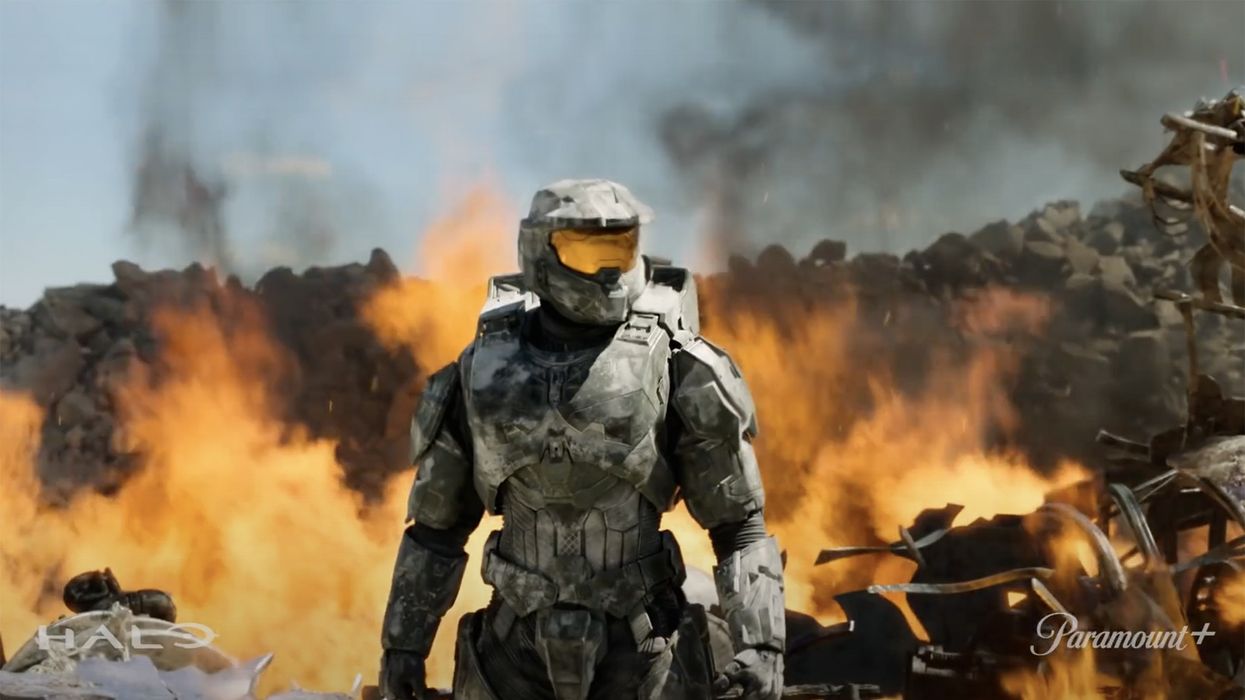Why the 'Halo' Franchise Took 17 Years to Break Free from the Video Game Medium
In 2001, Halo: Combat Evolved broke onto the game scene, beginning a franchise that is now a multimedia powerhouse. But the journey to get a Halo series or movie made has been perilous.

Time for a history lesson.
The original Halo game was created by Bungie and released for the Xbox console in 2001, even though initially it was meant for release on macOS and Windows.
It was a critical and commercial success when released and followed the exploits of a cybernetically enhanced soldier named John-117, a Master Chief Petty Officer of United Nations Space Command.
The basic premise is that players take control of Master Chief and kick alien butt. The story was a well-written romp that has been expanded over the past 20+ years into an epic space opera.
Jumping over 20 years after its release, Halo the series is coming to Paramount+ on March 24, 2022.
But the journey to break from its initial medium has been a difficult one. As with many Hollywood projects, Halo went through several iterations, had a webseries-styled live-action show on YouTube, and was almost a feature produced by Peter Jackson.
The Neill Blomkamp Feature
In 2005, Columbia Pictures took the reins on crafting a feature film based on the Halo franchise. Alex Garland of Ex Machina and Annihilation fame wrote the script, and Peter Jackson was slated to be the executive producer.
In the director’s chair sat Neill Blomkamp, at the time known for District 9. Before him, Guillermo del Toro was in negotiations to direct. To get things going, Blomkamp created a short film that showcased his approach to the project.
But things got bumpy real quick. Studios quickly passed, stating the lack of risk for Microsoft compared to their large share of potential profits. The technology juggernaut required $10 million against 15 percent of gross.
The script was eventually rewritten by D.B. Weiss of Game of Thrones fame and Josh Olson who penned A History of Violence.
With such names attached to the Halo project, you’d think it would be smooth sailing, but pre-production was started and restarted several times. The project eventually stalled due to financial reasons, and Blomkamp declared the project dead in late 2007.
While he said he wouldn’t return to Halo in narrative form, his work eventually led to—
Forward Unto Dawn
Technically a narrative live-action project, Halo: Forward Unto Dawn was never released as a feature film.
While it was shot as a feature film, the project was released on YouTube in a webseries format on Oct. 5, 2012, and eventually made its way to Netflix for a time.
Steven Spielberg Takes Charge
Following the success of Forward Unto Dawn, Steven Spielberg was set to produce a live-action television show of Halo. This was in 2013, and like the initial feature film endeavor, the project lingered in development hell for a time.
Blomkamp was rumored to direct the pilot, but that honor went to Rupert Wyatt, director of Rise of the Planet of the Apes. Wyatt was eventually replaced by Otto Bathurst, director of Peaky Blinders and UK’s Hustle.
The project was supposed to land on Showtime, but ViacomCBS ended up shifting the show to Paramount+, as the show didn’t really fit Showtime's brand.
And now you’re all caught up. Halo the series is coming to Paramount+ in March 2022, a whopping 17 years after the feature was first announced. While there have been some animated series since then, we wanted to focus on the live-action projects.
Why Halo Matters
Beyond being a genre-defining video game, Halo was a gateway for creatives. The video production company Rooster Teeth cut their teeth making machinima with the Halo video game. Machinima is a technique where creators use real-time computer graphics in cinematic productions such as video games. It is a combination of the words "machine" and "cinema."
While machinima had been around since the 80s, Rooster Teeth’s Red vs Blue catapulted the format into the mainstream.
To some, Halo is just a video game about shooting aliens. But it defined a genre, crafted life-long friendships with its multiplayer features, and became a creative tool for artists to make shorts. The story tugged on the heartstrings and opened up a tragic world that made you feel like you were a part of something special.
It delivered hope.
We truly have come a long way since the Atari and Commodore 64.











